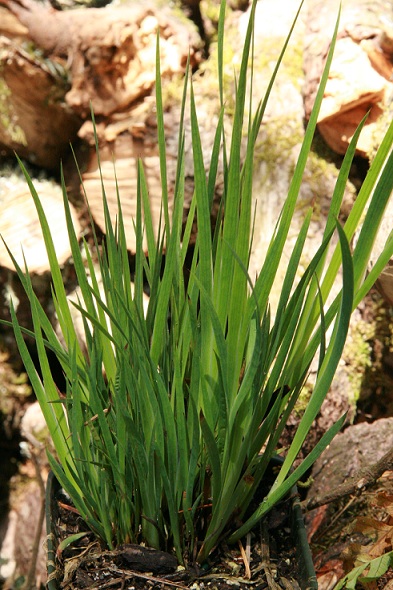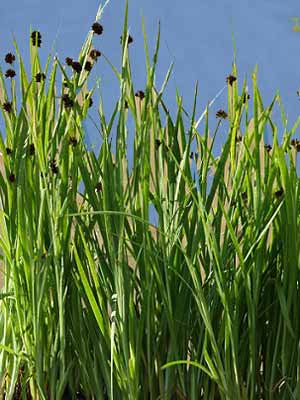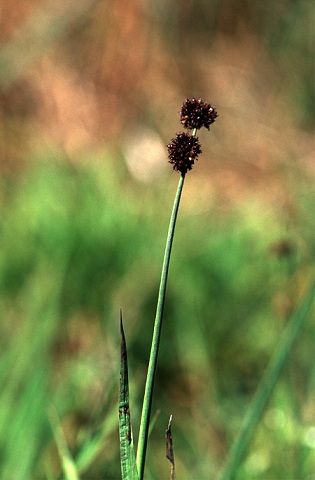|
|
|
Hansen's Northwest Native Plant Database |
|
|
|
Juncus ensifolius (Dagger Leaf Rush, Swordleaf Rush, Dwarf Rush, Three-Stemmed Rush, Three-Stamened Rush)
|
 |
||||||||||||||||||||||||||||||
| Description: An easy way to remember the characteristics of this species is by learning that the Latin word Ensifolius means sword-leaved. This species has thin (up to Ό), flat leaves, reminiscent of Iris species. Three to four leaves emerge from each stem and grow parallel to it. The stems are often solitary but, if not they usually grow in rows from the thick rhizomes and stretch upward from 6 24. | |||||||||||||||||||||||||||||||
|
Juncus ensifolius has very compact, ball-like clusters of tiny flowers that are greenish- to purplish-brown and are found in groups of 1 10 clusters at the top of the stem, although the lowest scale (or bract) reaches upwards as much as 4 and looks like an extension of the stem. This plant has been found in association with mychorrhizal fungi. These fascinating fungi are extremely beneficial to plant health. They attach themselves to the roots of certain plants, becoming an extension of the roots. With this increased surface area, they are able to tolerate stressful situations and fend off disease as well as to absorb more water and nutrients. It is easy to see how the presence of these fungi would be an incredible advantage to plants in any environment, but especially those of the wetland where flooding and excesses of nutrients are common occurrences. Habitat and Range: Dagger Leaf Rush grows in wet, sandy soils from Alaska to California and east throughout the Rocky Mountain ranges. They are found in USDA zones 4b - 8 at elevations from 400 3,000. This plant thrives full sun but will tolerate partial shade. |
 |
||||||||||||||||||||||||||||||
|
Ornamental Value: Dagger Leaf Rush is an attractive, low-growing plant that can be tucked in amid other larger species, as it is quite capable of holding its own. Try filling in the undergrowth of larger, riparian shrubs such as Black Twinberry (Lonicera involucrata) or any of the Elderberry varieties (Sambucus spp.) with this plant. |
|||||||||||||||||||||||||||||||
|
Native Plant Gardening/Wildlife Habitat: The seeds of Dagger Leaf Rush are eaten by a wide variety of shorebirds, sondbirds, waterfowl and gamebirds. A myriad of small animals depend on these wetland plants for shelter from predation while they themselves catch smaller animals and drink water. They use the leaves and stems for nesting materials, and lay their eggs amongst the dense clusters of plants where their young will be somewhat protected from predation. Historical/Cultural uses: Dagger Leaf Rush was used only rarely by Native groups. Propagation Techniques: The most successful means of propagating this plant are through bare rootstock. The best time to plant out on the Pacific coast is in mid- to late October, before the heavy rains have begun in full but the weather is sufficiently cool that the new plants will not lose a lot of moisture through evapotranspiration. The plants are set about 1 deep in wet soil to 3 of standing water. |
 |
||||||||||||||||||||||||||||||
|
Bibliography: Thank you to the following references for their invaluable information:
|
|||||||||||||||||||||||||||||||
|